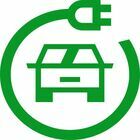Updated on 24/02/25 by Abby_OVO
Want to find out more about Charge Anytime? Check out this topic:
There are complications of charging to 100%. 0-99% is straight forward and the time to charge calculation is relatively linear. However, the last one percent is a two stage process. Stage one is the charge time to go from 99% to 100% nominal - the point where the lowest-capacity pair of cells (96 series connection of a pair of cells, 96s2p configuration) reaches its maximum voltage. That takes about three minutes.
After that point the charger in the car drops the power down down to 2kW (you can see this happen on 7 and 22kW chargers) and then selectively brings each pair of cells to the maximum voltage. When the highest capacity pair reach the maximum voltage the cell levelling process terminates and a 100% charge is declared. The time to do the levelling varies according to a number of parameters but the main one is the number of miles since the last 100% charge. The energy required to do this can vary from 3-5kWh every time you do it. The variability of this process is shown on the Renault app as a loss of time to complete the charge whereas it would show a charge completion time before 99%.
Getting back to your issue: Is the app etc capable of recognising that the very last part of the charge can take a lot longer than simply calculating a pro-rata time based on the rate that it is charging up to 99%? Perhaps it gets it right some of the time. Maybe that will be when you have done fewer miles since the last full charge.
Another possibility is that the charge reported by the BMS can drop when the battery temperature drops even though no charge is lost from the battery. I have noticed that I can park a warm car / battery in the evening at say 70% and if it has been very cold overnight it will report only 68% in the morning only for it to report 69% later on in the day when it has warmed up a bit. The BMS does change the available battery capacity according to temperature and it’s not the only car to do it.
There is also the possibility of a malfunction somewhere between the car and Ovo’s servers during the charging process.
I hope that helps
Peter














